Hanoi (Hà Nội)- the capital of Vietnam; political, economic, cultural, commercial and tourist center of the country. Hanoi is located in the center of the Red River Plain. The area of Hanoi with the outskirts is 2 thousand square meters. km, population - 2.8 million people. Hanoi is divided into 9 districts - Hoan Kiem, Haibachyng, Badinh, Dongda, Teiho, Causei, Thanhsuan, Longbien, Hoangmai - and also includes 5 suburban counties: Thiliem, Zyalam, Dongan, Thanhchi, Shokshon.
Both Vietnam Airlines and Aeroflot regularly fly to Hanoi from Moscow. Planes land at Noi Bai Airport, located 30 kilometers from the city. If you have an invitation, you can get a visa right at the airport.
CLIMATE
Hanoi is located in the tropical monsoon climate zone. There are four seasons in Hanoi: spring, summer, autumn and winter. However, for the convenience of tourists, only two seasons are usually spoken of: the rainy season and the dry season. The dry season lasts from October to April. This is a cool period with little rain. From May to September is the hot season with showers and even typhoons. September and October - Hanoi autumn. In autumn, the weather in Hanoi is warm, clear, with a light, cool breeze - perhaps the most comfortable time of the year. The average temperature in the city: in winter - 17.2 degrees, in summer - 29.2 degrees, the average annual temperature is 23.2 degrees. The average annual rainfall is 1.800 mm.
STORY
The place where Hanoi is located is the historical center of Vietnam, the cradle of Vietnamese civilization. It was here that the semi-legendary state of Vanlang was located, in which 18 Hung rulers ruled. In 257 B.C. the ruler of the new Vietnamese state Au Lac, An Duong Vuong built a new capital Koloa (in the current Dongan County) a few kilometers from modern Hanoi. In the 6th century, during a brief period of independence from China, the capital of the Vietnamese empire, Van Xuan, was located in the southern part of modern Hanoi on the Tolit River. In 866, Gao Pian, the Chinese viceroy in Vietnam, built the Daila fortress in the area, which became his residence.
The history of Hanoi itself begins in the 11th century. In 1010, the founder of the first major dynasty after Vietnam gained independence from China, Li Kong Huan, choosing a place for the new capital, paid attention to this territory, located in the center of the country, at the crossroads of trade routes. According to legend, the final choice of a specific place for construction was made after Lee Kong Wang, sailing along the Red River, saw a dragon take off into the sky. In honor of this event, the city was named the city of the "flying dragon" (Thanglong - the city received its modern name Hanoi only in the 19th century). It is 1010 that is considered the year of the founding of Hanoi. In the same year, active construction began: imperial palaces, Buddhist pagodas and even a library were built. Hanoi became the capital of the rapidly growing Vietnamese empire - Dai Viet. In the 11th-12th centuries. the most famous architectural structures in Hanoi were built - the Pagoda on one column, the Quan Thanh Temple, the Temple of Literature and others. In the second half of the 13th century, the city was attacked three times by hordes of Mongolian troops (1258, 1285 and 1288), but managed not only to survive, but also to remain the center of the Vietnamese state.
In 1397, the city was renamed Dongdo, and in 1428, Dongkinh (both names translate as "Eastern Capital"). It was by the name of Dongkinh that Europeans began to call northern Vietnam Tonkin (a version of Dongkinh distorted by the Portuguese). It was not until the 19th century that the city received its present name of Hanoi, which means "the city at the bend of the river." Since the beginning of the 19th century, the role of Hanoi in the political and economic life of Vietnam has been weakening somewhat due to the transfer of the capital to Hue and the rapid development of Saigon in the south of the country. However, Hanoi even then remained the cultural center of the Vietnamese state, it was from there that most of the winners of traditional Confucian exams came from. After the victory of the August Revolution of 1945, Hanoi again became the capital of the Democratic Republic of Vietnam. After the victory of North Vietnam over the South, whose capital was Saigon, and the unification of Vietnam in 1976, Hanoi became the capital of the reunited Vietnamese state - the Socialist Republic of Vietnam. Currently, Hanoi is one of the most rapidly developing cities in Southeast Asia: modern hotels, shopping malls, and highways are being built. At the same time, the spirit of antiquity is preserved in Hanoi, historical monuments are carefully guarded. In 4 years the city will celebrate the millennium of its founding.
ATTRACTION
Despite numerous wars and periods of occupation, many monuments of architecture and sculpture have been preserved in Hanoi in one form or another. Of course, almost all of them have come down to us in a restored form, but they have retained the spirit of the era when they were created. Colonial French buildings give a special flavor to the eastern city. Many historical monuments are located in the vicinity of Hanoi. It would take a whole book to list all the architectural sights of the capital of Vietnam, so here we will talk about the most interesting and geographically accessible.
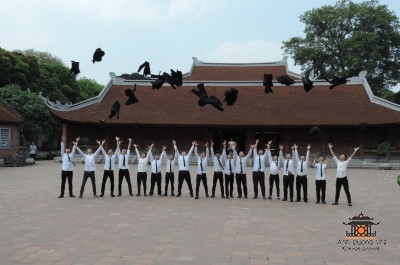 Temple of Literature, perhaps the most famous landmark of the city, which has become its official symbol. In 1070, the temple itself (Van Mieu) was built, which became the cult temple of Confucianism. In 1076, the first University in the history of Vietnam was founded here - (Quok Ty Giam). At first, only relatives of the emperor studied here, then the university was opened to the rest of the population. But its main purpose was not teaching, but passing state exams based on knowledge of Confucian canons. Examinations were held every three years, winning them opened the way to the top of the bureaucratic hierarchy. In 1482, the emperor Le Thanh Tong ordered the construction of stone steles on the territory of the University, on which the names and birthplaces of the winners of the exams were engraved. The steles were mounted on the backs of stone turtles. The turtle is considered one of the most revered creatures in Vietnam, many legends are dedicated to it. Now there are 82 steles on the territory of the temple. The temple is 650 meters long and about 70 meters wide. Along the perimeter, the temple is surrounded by a low brick fence with monumental gates. The architectural ensemble is divided into five geometric parts-courtyards, going one after the other and separated by low walls with gates. In the third part of the complex there is a pond with the poetic name "Pond reflecting the radiance of the Sky".
Temple of Literature, perhaps the most famous landmark of the city, which has become its official symbol. In 1070, the temple itself (Van Mieu) was built, which became the cult temple of Confucianism. In 1076, the first University in the history of Vietnam was founded here - (Quok Ty Giam). At first, only relatives of the emperor studied here, then the university was opened to the rest of the population. But its main purpose was not teaching, but passing state exams based on knowledge of Confucian canons. Examinations were held every three years, winning them opened the way to the top of the bureaucratic hierarchy. In 1482, the emperor Le Thanh Tong ordered the construction of stone steles on the territory of the University, on which the names and birthplaces of the winners of the exams were engraved. The steles were mounted on the backs of stone turtles. The turtle is considered one of the most revered creatures in Vietnam, many legends are dedicated to it. Now there are 82 steles on the territory of the temple. The temple is 650 meters long and about 70 meters wide. Along the perimeter, the temple is surrounded by a low brick fence with monumental gates. The architectural ensemble is divided into five geometric parts-courtyards, going one after the other and separated by low walls with gates. In the third part of the complex there is a pond with the poetic name "Pond reflecting the radiance of the Sky".
One Pillar Pagoda- the most famous Hanoi pagoda, the unofficial symbol of the city. Built in 1049. One legend is connected with the history of its creation. Emperor Li Thanh Tong had no heirs. But one day in a dream, he saw the Buddhist goddess of mercy, Kuan Am, sitting on a lotus flower. She held a baby in her arms, which she gave to the emperor. After some time, the emperor had an heir and, in gratitude, he ordered the construction of a pagoda in the shape of a lotus.
The pagoda was built right next to the Forbidden City, and the emperor himself came here to pray every month on the first and fifteenth day (according to the lunar calendar). In January 1070, the emperor personally made a Buddhist inscription in the pagoda on a stone stele. In 1105 the pagoda was restored. A pond was dug around the Pagoda, a corridor decorated with carvings around the pond, and a moat around the corridor. Arched bridges were thrown across the moat and pond. In the courtyard of the Pagoda, a Sacred Tower was placed ...
Unfortunately, this large-scale architectural structure was almost completely destroyed during the wars. Only a small pagoda has survived today, standing on a single pillar in the middle of a small pond covered with lotus flowers. Inside the pagoda is a statue of the thousand-armed goddess Kuan Am. And the pagoda itself resembles a lotus flower in shape and carries a deep philosophical Buddhist meaning: the lotus flower rising from the water symbolizes enlightenment, the highest rise of the mind.
Quan Thanh Temple: Temple of Thanh Chang Wu worship. Thanh Chang Vu is the image of two characters at once: one of the Vietnamese myths (Mr. Thanh, who helped the ruler An Duong Vyong to destroy the evil spirit that interfered with the construction of the Koloa fortress), the other is from the Chinese myth (Mr. Thanh, patronizing the North). The temple was built during the reign of the first emperor of the Ly dynasty - Li Thai To (1010 - 1028). In the temple in 1677, a giant statue of Thanh Chang Wu made of black bronze was installed. Its height is 3.96 meters, weight is about 4 tons.
Tran Quoc Pagoda- the oldest Vietnamese pagoda, located near the Quan Thanh Temple. According to legend, the pagoda was built in 541 during the reign of Ly Nam De, who achieved independence from China for a short period of time. Previously, the pagoda was located on the banks of the Red River, but then it was moved to an islet on the West Lake (Ho Tay). Then an earthen rampart was poured between the island and the shore. The architectural structures of this famous monument of Buddhism are harmoniously combined with the natural landscape - rich vegetation and the calm surface of the lake, creating a unique magnificent landscape.

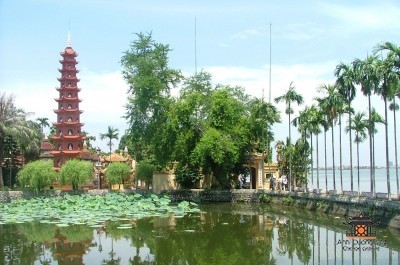
Chung Sisters Temple- a memorial temple in honor of the national heroines of Vietnam - the sisters Chyng Chak and Chyng Ni - who fought in the 1st century against the Chinese invaders. The beginning of the construction of the temple dates back to 1142. At the main altar there are large statues of the sisters, surrounded on both sides by 12 sculptures of other Vietnamese military leaders who followed the Trung sisters. Also in the temple you can see two black statues of the war elephants of the sisters.
Ngoc Son Temple- Temple of the Jade Mountain, located on an island in the middle of the central lake of Hanoi - Lake of the Returned Sword. The temple is dedicated to Tran Hung Dao, the greatest Vietnamese commander who defeated the Mongol troops twice in the 13th century. The temple was built in the 19th century. The picturesque red wooden bridge The Hook leads to the temple, which symbolizes the heavenly path along the rainbow. On the territory of the temple is the body of the mythical Turtle Kim Kui, who repeatedly helped the Vietnamese rulers.
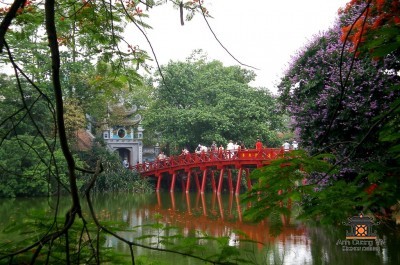
Turtle Tower- a beautiful tower, standing alone on a tiny island in the lake of the Returned Sword. Also dedicated to the turtle Kim Kui. Built in 1877. This tower is believed to be the turtle's head, and Ngoc Son Temple is its body. There is no bridge leading to the tower, so you can only admire it from the shore.
Badinh Square Complex- the square where Ho Chi Minh in 1945 proclaimed the independence of Vietnam and the birth of a new Vietnamese state - the Democratic Republic of Vietnam. The complex includes the Ho Chi Minh Mausoleum, the Presidential Palace, the Ho Chi Minh House and the Ho Chi Minh Museum.
Mausoleum of Ho Chi Minh- one of the four mausoleums of the world available for viewing. Opened August 29, 1975. The construction of the mausoleum began in 1973 on the spot where the tribune used to stand, on which Ho Chi Minh sat during solemn meetings. In the design of the mausoleum, the architects tried to depict a traditional Vietnamese community house. The former Governor's, now the Presidential, Palace was built in 1900-1906. by German architects for the governor-general of Tonkin. Until 1945, it was used for the residence and work of the ruling governor. From 1947 to 1954, the command of the French army, which captured the city, was located here. After the liberation, the Palace became the official reception venue for Ho Chi Minh. However, the president himself lived in a different building. Ho Chi Minh House is located to the left of the Presidential Palace, near a small pond. A gravel path, lined with trees on both sides, leads to the house, which stands among the summer arbors and is surrounded by a hedge. The house itself stands on stilts and has two floors. The Ho Chi Minh Museum is located a little further from Badinh Square. It's a big white building.
Cat Co flag tower- the only building of the ancient citadel, which happily escaped destruction by the French troops. It was built in 1812 during the reign of the founder of the last Vietnamese Nguyen dynasty, Emperor Gia Long. The height of the entire tower is 33.4 meters, including the flagpole - 41 meters. The tower offers a panoramic view of the city. The tower is located on the territory of the Military Museum.

Woi Phuc Temple- temple of the kneeling elephant, dedicated to Prince Lin Lang - the guardian spirit of the western part of the city. Built during the reign of Emperor Lee Thai Tong (1028 - 1054). The temple is located in one of the most beautiful places in Hanoi - Thu Le Park. According to legend, Lin Lang decided to defeat the enemies who once again attacked Vietnam with the help of elephants. As he approached the herd, the largest elephant knelt down to greet the prince.
Cathedral of Saint Joseph- the largest architectural monument of the city, built by the French. It was built in 1886 on the site of an ancient pagoda similar to the Notre Dame Cathedral.
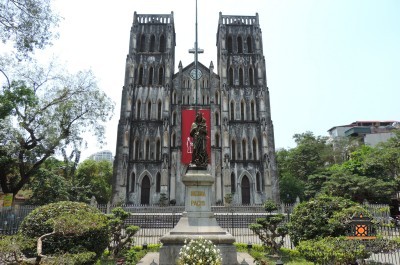
Ethnographical museum- This is the largest museum in Vietnam and, perhaps, the most interesting for tourists. Built in 1997. During the construction of the museum and the creation of the exposition, Vietnam received assistance from Japan, Holland, the USA, Canada, and France. The museum has more than 10 thousand exhibits, 15 thousand photographs, hundreds of video materials telling about the life of all 54 nationalities living in Vietnam. The interior of the museum is designed in the style of each of the nationalities. Of particular interest are the recreated stilt houses.
Historical Museum. Created in 1926. The building was built in European style. The area is more than 2 sq. km. It was originally called the Museum of Ancient History of the Far East. In 1958, it was renamed the Vietnam History Museum. The exposition of the museum tells about the process of the formation of the Vietnamese state from the birth of civilization and the beginning of the formation of statehood to the period of the formation of the Communist Party of Vietnam and the victory of the August Revolution of 1945.
Museum of Fine Arts of Vietnam. It was created in June 1966. The exposition of the museum presents samples of various types of Vietnamese art, both ancient and modern. The museum contains numerous valuable collections of famous Vietnamese artists (To Ngoc Wan, Nguyen Phan Tian, Tran Van Kang, Bui Xuan Fai…).
Ho Chi Minh Museum. It was opened in honor of the 100th anniversary of the first president of independent Vietnam, Ho Chi Minh, on May 19, 1990. The museum building is shaped like a lotus flower. Exhibits are exhibited here that tell about the heroic path of the national hero of Vietnam, the leader of the national liberation struggle of the Vietnamese people (1890-1969), and the exposition is built in an unusual form: some rooms are decorated in the national style, while others, on the contrary, amaze the imagination with their modernism and even abstractionism .
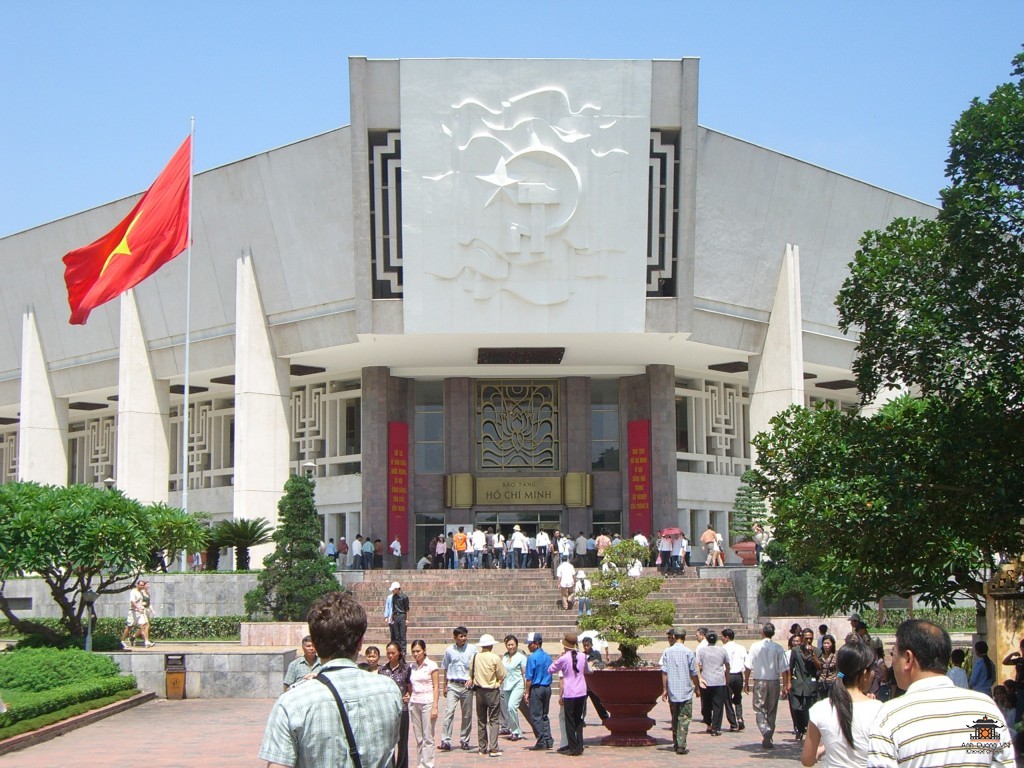
Museum of the Revolution. Established in January 1959. Located in a two-story building on Tongdan Road. Previously, the customs office was located here, then the building was rebuilt. Now more than 40,000 exhibits are exhibited in 30 halls of the museum. The first hall contains general materials about Vietnam and the Vietnamese people. The last hall is dedicated to the solidarity of the peoples of the world with the Vietnamese people.
Army Museum. Located on Dienbienfu Street, on the site of the former barracks of the French Expeditionary Force. Premises with a total area of 10.000 sq.m. were rebuilt and in 959 the museum was opened. Today the area of 30 exhibition halls is 2.000 sq.m. The exposition is devoted to the process of formation and development of the People's Armed Forces of Vietnam.
Vietnam Women's Museum. Here are exhibits dedicated to the women's movement in the history of Vietnam, as well as the national costumes of women of different nationalities living in Vietnam. Women have always played a huge role in Vietnamese history. Suffice it to recall the Chung sisters, Lady Chieu, who fought against the Chinese invaders, Empress Yi Lang.
NATURE AND SURROUNDINGS
Hanoi is one of the greenest capitals in the world. Numerous lakes scattered throughout the city greatly enliven the city. The largest are the Western Lake (Ho Tei), the Lake of the Returned Sword (Ho Hoan Kiem), the Seven Mau Lake (Ho Bai Mau; Mau is an area unit equal to 3600 sq. m.). Lakes and ponds, greenery and flowers give Hanoi harmony and poetry, which invariably arouses the admiration of the city's guests. Tourists should visit not only the city itself, but also several historical monuments and natural attractions in its vicinity.
The ancient capital of Koloa- the oldest of the surviving cities of Vietnam. It is located 18 kilometers north of Hanoi. Koloa was the capital of the Vietnamese state in 257-207. BC. Many legends are associated with its construction. The city was built in the form of a snail's shell, which is why the city is often called the city of the snail. The city consisted of three rows of walls: outer, central and inner. Now only a few fragments remain of the wall. Behind the walls there is a memorial temple to the ruler of An Duong Vuong, a pond was dug, in the middle of which there is a statue of An Duong Vuong holding a magic crossbow in his hands. Of particular interest is the pagoda dedicated to Princess Mi Chau, who was beheaded by her own father for passing on the secret of the magic crossbow to the enemy.
Pagodas near Hanoi. Among them, it is worth noting the Fragrant Pagoda (chùa Hương), the Teacher's Pagoda (chùa Thầy), the West Side Pagoda (Chùa Tây phương). Fragrant Pagoda, located 42 kilometers south of Hanoi, is located in a picturesque place. To get to it, you need to sail on a boat along the river, which flows right through the rice fields. Fragrant pagoda is a whole complex of buildings. A special feature of Master's Pagoda is a grotto located next to the pagoda. In Tay Phuong Pagoda, a collection of ancient sculptures made by unknown masters of the 18th century is of exceptional interest.
Catholic churches around Hanoi. Vietnam is one of the few Asian countries where Catholics made up a significant portion of the population. Most of them were in the north of the country, and therefore many beautiful Catholic cathedrals and temples were built around Hanoi.
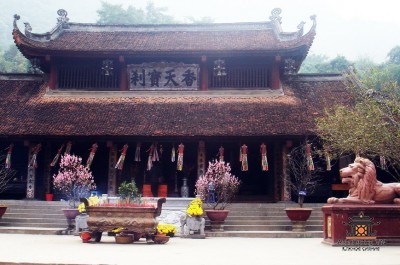
ENTERTAINMENT
Theater of puppets on the water. A unique cultural phenomenon that originated in the 11th century. The actors here are puppets controlled by people, standing waist-deep in water and covered with a special screen. The theater is located on Dinh Tien Hoang Street, next to the Lake of the Returned Sword. Evening performances start at 20:00.
Zoo. Located in Thu Le Park in the western part of the city. The zoo has about 600 species of animals and birds.
Circus. It is located in the northern part of Lenin Park.
Aquapark. It is located on the West Lake under the open sky, so it works only during the warm season from April to November.
Night club New Century. The largest nightclub in the city. Located on Trang Thi Street near the Lake of the Returned Sword.
Leisure Center Kim Lien. Bowling, billiards. Located on Kim Lien Street.
